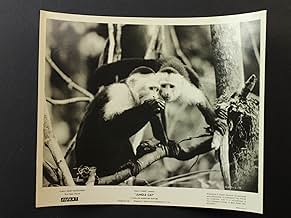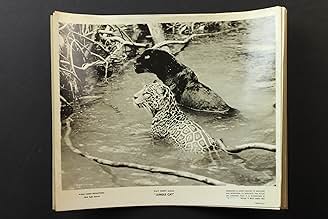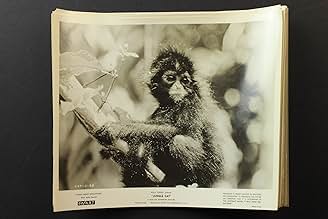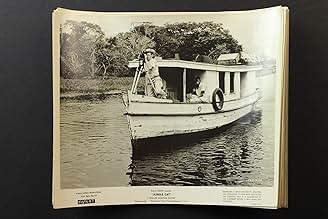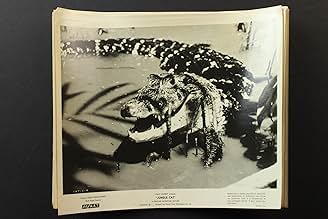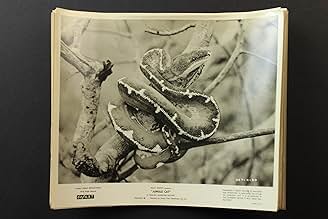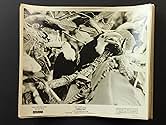IMDb RATING
7.2/10
464
YOUR RATING
This documentary chronicles the life of a female spotted jaguar in the South American jungle.This documentary chronicles the life of a female spotted jaguar in the South American jungle.This documentary chronicles the life of a female spotted jaguar in the South American jungle.
- Director
- Writer
- Star
- Awards
- 1 win & 1 nomination total
Winston Hibler
- Narrator
- (voice)
- Director
- Writer
- All cast & crew
- Production, box office & more at IMDbPro
Featured reviews
Very cute, I have recently caught love for these documentaries about the biosphere, here a very fluffy and brasuca example, the Amazon Forest ecosystem, as main characters a beautiful and wonderful Jaguar family, affectionately called cats, we learn from them, about them, and we tasted beautiful images, in love with sloths, a magnificent documented report...
This is a famous Walt Disney documentary, on the Amazon Rainforest and its Jaguar. I found that most of the scenes were edited to make a humanized appearance of the animals. In its day, this film was something special. Today it is historic to Disney lovers. Accustomed to watching the Discover Channel and Animal Planet, it appears hokey, much like John Ford's Battle of Midway. It contains some great footage that was either staged or edited to add character to this documentary. Disney must have wanted to portray animals as humans, there is a family of jaguars that are the main characters in this film. Seems to me that Reptiles are the bad guys in most of his documentaries. Human traits are the common thread in these Disney films, more about the human way of life applied to nature. All in all it is a historic film worth an hour of your time, even for a good laugh at the voice overs.
Here we have another of Disney's wonderful True-Life adventures. This one concentrates on the wildlife of the Amazonian rain forest. It concentrates on the jaguar.
Although the cats are beautiful creatures, I found the slow-motion images of birds more engrossing, particularly the flock of flamingos taking off.
Although the Disney series is often called out for its faked footage and trained animals, they were instrumental in nurturing a love of wildlife in the 1950s and 1960s, and certainly no worse than TV shows like WILD Kingdom, in which Marlon Perkins would tell its audience "While Jim wrestles the tiger, he's a message from Mutual of Omaha." Did their life insurance policies cover mauling by jaguars?
Although the cats are beautiful creatures, I found the slow-motion images of birds more engrossing, particularly the flock of flamingos taking off.
Although the Disney series is often called out for its faked footage and trained animals, they were instrumental in nurturing a love of wildlife in the 1950s and 1960s, and certainly no worse than TV shows like WILD Kingdom, in which Marlon Perkins would tell its audience "While Jim wrestles the tiger, he's a message from Mutual of Omaha." Did their life insurance policies cover mauling by jaguars?
Mainly because of diminishing returns, "Jungle Cat" was the last of Disney's "True-Life" feature length nature documentaries. Though I think another reason for that was that the makers of these movies had pretty much run out of techniques and tricks to really captivate the audience. Don't get me wrong, the documentary does educate, and some of the footage is fairly impressive. But even though the documentary is only seventy minutes in length, it often feels slow and sluggish. The movie seems to be repeating itself over and over. One reason for this may be that there is a significant lack of focus. Though the title of the documentary proclaims it is about the South American jungle cat, the movie keeps jumping back and forth from that subject to focus on other animals in the Brazilian rain forest. It might have worked slightly better had the movie given every focused animal a brief look, then jumped to another animal and not looked back. I realize I seem to be portraying this movie as being really bad. It really isn't; it could have been a lot worse. But all the same it eventually overstays its welcome.
I give it a high rating considering that Disney was a pioneer in nature films as family entertainment. Decades before the Discovery Channel, Disney and his filmmakers were winning awards for these films. Cinematography has come a long way in the ensuing 58 years, but this film captures close ups and action shots of the wildlife without giving the viewer headaches. Just compare anything Disney did in the 40s and 50s to the entertaining 1974 nature film "Animals are Beautiful People". I loved the jokes, but I hated the headache I got from the blurred photography that simply could not keep up with the motion of the animals. Now back to the story.
The film's main focus is a spotted female jaguar living in the South American jungle who chooses a black male jaguar as a mate and produces two cubs - one being identical to dad and one identical to mom. They are portrayed as being a family unit throughout the film, probably to humanize them so people could relate, even though jaguars actually separate after mating.
To supplement the footage of the jaguars, there is a discussion of many of the animals living in this ecosystem including the otter, the capybara ( a rodent), the monkeys - who are vegetarians and live in the treetops - who tease the sloth, and the tapir, which is a favorite prey of the jaguar. It is these other animals who, though fascinating, act as filler for the story of the jungle cat. The finale of the film shows the adult male jaguar in a face off with a giant boa constrictor, and where they fight very definitely determines the outcome of the battle.
I'd recommend this one as it is still entertaining today both in its form and substance.
The film's main focus is a spotted female jaguar living in the South American jungle who chooses a black male jaguar as a mate and produces two cubs - one being identical to dad and one identical to mom. They are portrayed as being a family unit throughout the film, probably to humanize them so people could relate, even though jaguars actually separate after mating.
To supplement the footage of the jaguars, there is a discussion of many of the animals living in this ecosystem including the otter, the capybara ( a rodent), the monkeys - who are vegetarians and live in the treetops - who tease the sloth, and the tapir, which is a favorite prey of the jaguar. It is these other animals who, though fascinating, act as filler for the story of the jungle cat. The finale of the film shows the adult male jaguar in a face off with a giant boa constrictor, and where they fight very definitely determines the outcome of the battle.
I'd recommend this one as it is still entertaining today both in its form and substance.
Did you know
- TriviaFourteenth and last installment of the True-Life Adventures series of nature documentaries produced by Walt Disney.
- GoofsThere are actually two snakes in the jaguar battle scene. The female fights with a Boa constrictor and the male with an anaconda, of the genus Eunectes.
- ConnectionsEdited into Le monde merveilleux de Disney: Man Is His Own Worst Enemy (1962)
Details
- Release date
- Country of origin
- Official site
- Language
- Also known as
- Jungle Cat
- Filming locations
- Production company
- See more company credits at IMDbPro
- Runtime
- 1h 9m(69 min)
- Aspect ratio
- 1.75 : 1
Contribute to this page
Suggest an edit or add missing content

